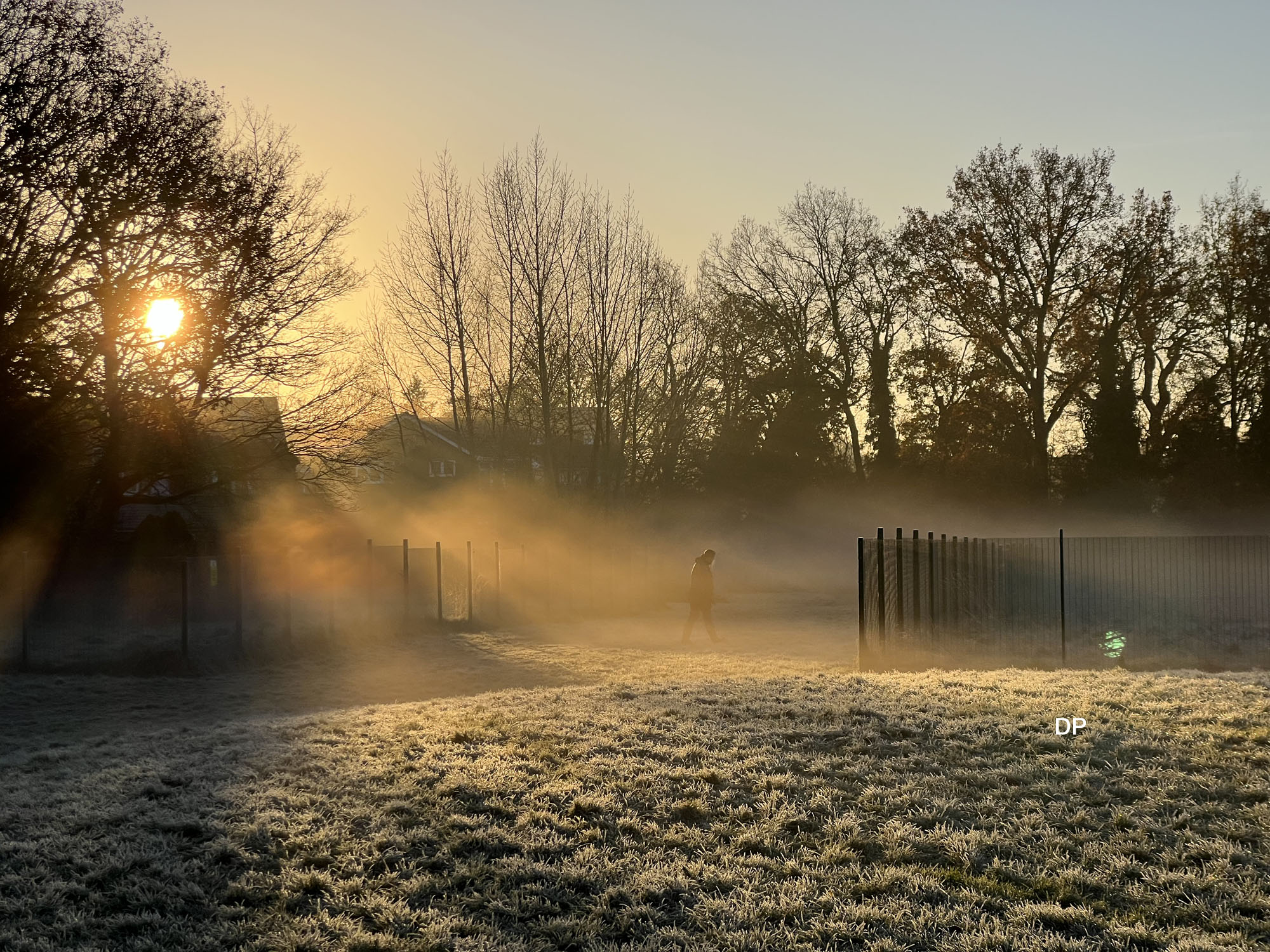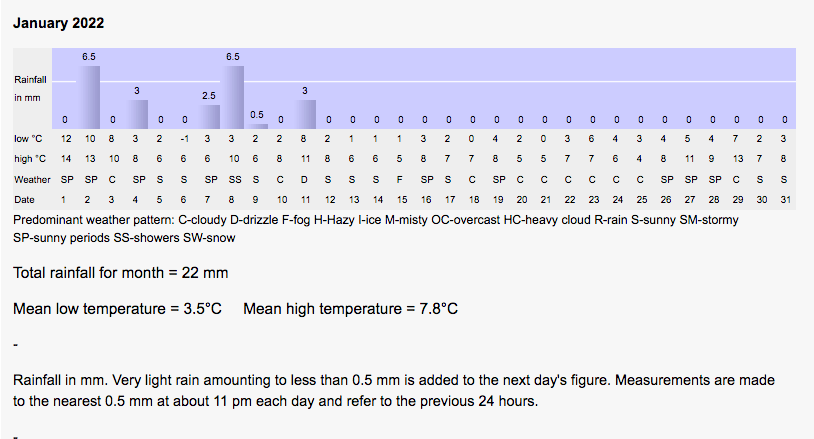
January was remarkable for lack of rain – 22 mm was the lowest we have measured. The weather too, was quite mild and looks like being so into February. No snow and few frosty mornings. The Heath is normally muddy or very muddy at this time of the year, but at the end of the month one could walk around and boots were hardly needed.
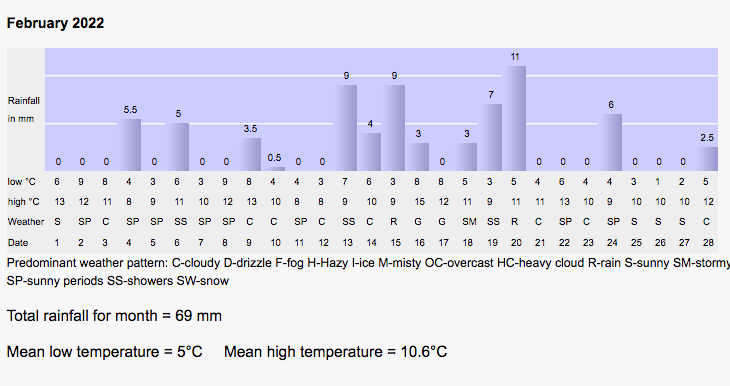
February was the mildest we’ve had with low and high temperatures consistently above any previous year. Plenty of rain around though. I think it was about this time when the ‘Beast from the east” appeared which was a real bind.
Our measurements are summarised in the tables below. The weather data on individual days is stored separately.
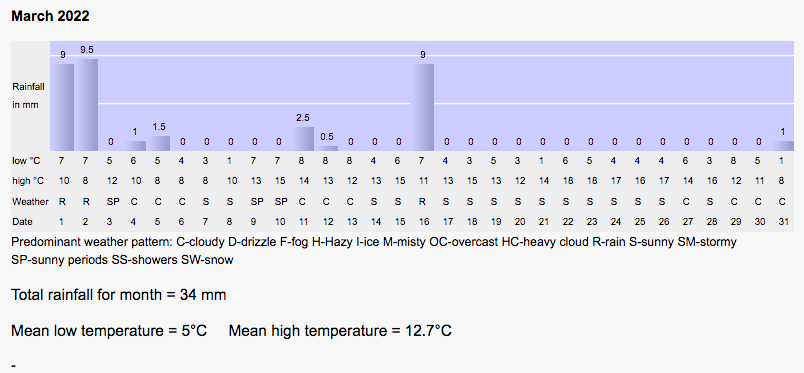
March rainfall about average (see below). The long spell of dry sunny days from the 17th to the 28th was exceptional, with correspondingly cool nights. The 31st was the precursor of the coldest weather we have experienced in 2022, with light snow showers for the first time too.
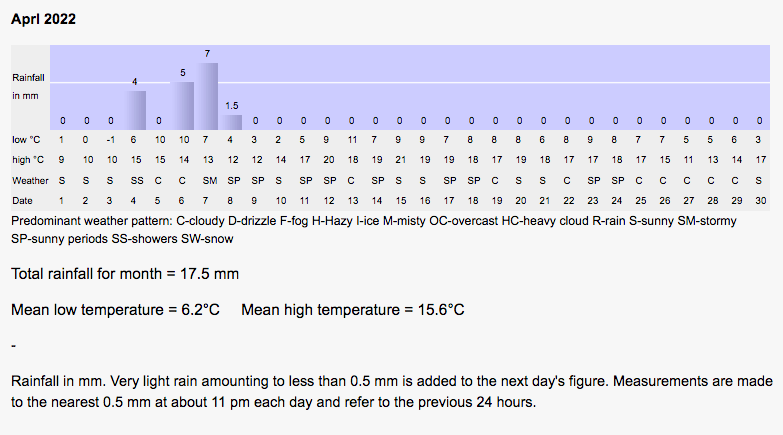
April – rainfall quite low (17.5 mm) like last year. Temperatures quite promising for the first three weeks, but followed by easterly winds, cloudy weather and relatively cool conditions.
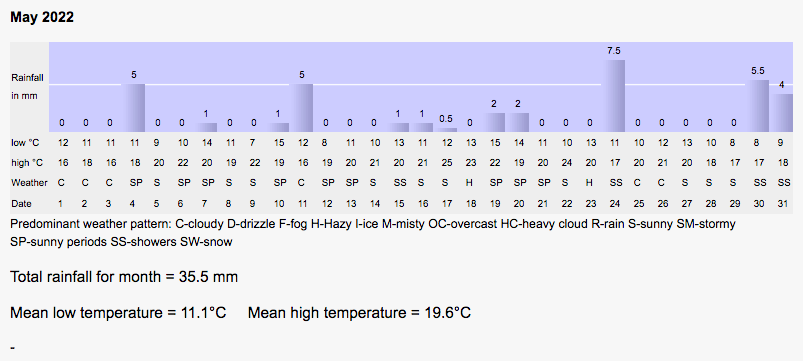
May – rainfall low again compared with previous years, but well spaced out over the month. By and large a good year for farmers and gardens – fruit crops especially look promising if enough rain comes in June. Temperatures above average for most of the month but the last few days quite cool.
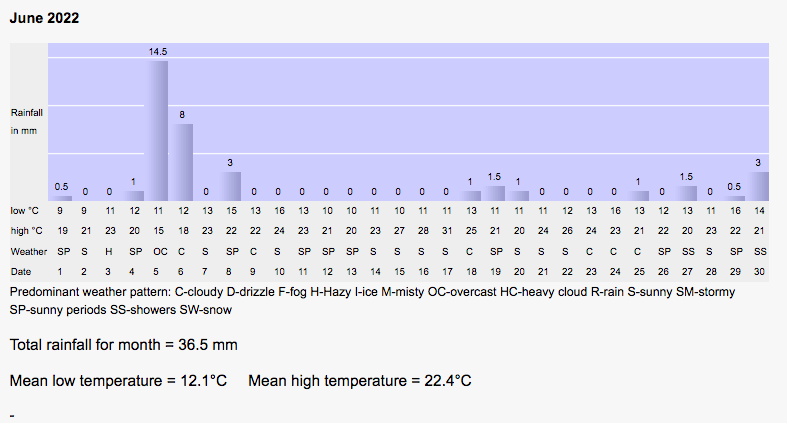
June – There was a short period of quite hot weather on the 15 – 18th, peaking at 31° deg on the 17th, but otherwise temperatures stayed close to the means 20 -23 ° for the last 8 years. Rainfall was again on the low side at 36.5mm, following the trend of the last three months. Soil still looking baked hard, easily absorbing any rain that falls.

July – Exceptionally hot (37°) on the 19th, with a record for England of over 40° measured in Lincolnshire. Overall, the average July temperature 26.3° was not as high as in July 2018, 28.1°. Rainfall has been very low over the last three months, culminating in a mere 7.5 mm.
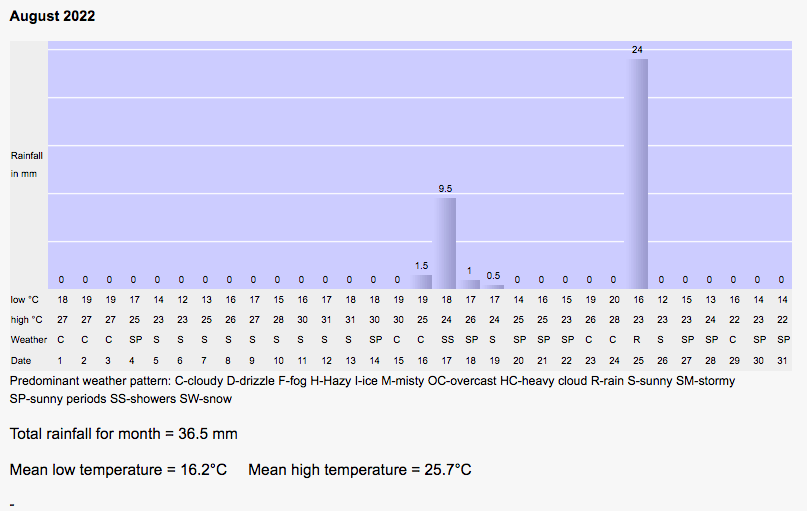
August – The 25th brought 24 mm of rain, leading to a total of 36.5 mm, still below average for the month and just enough to green up the grass for a day or so. It was then back to dry dusty conditions again. Low and high temperatures were a degree or so above average. Leaf condition on many Heath trees shows they are still badly in need of water.
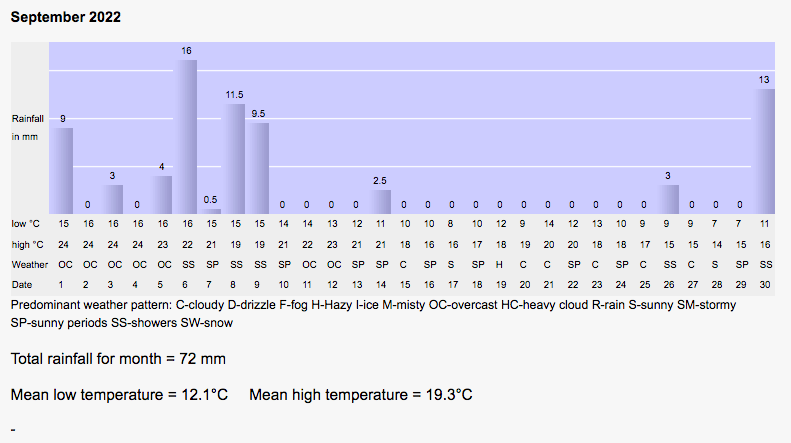
September – one of the highest September rainfalls (72mm) measured, probably helping to alleviate water shortages. About average temperatures, although it may have seemed cool towards the end of the month if you kept your heating off to save energy.
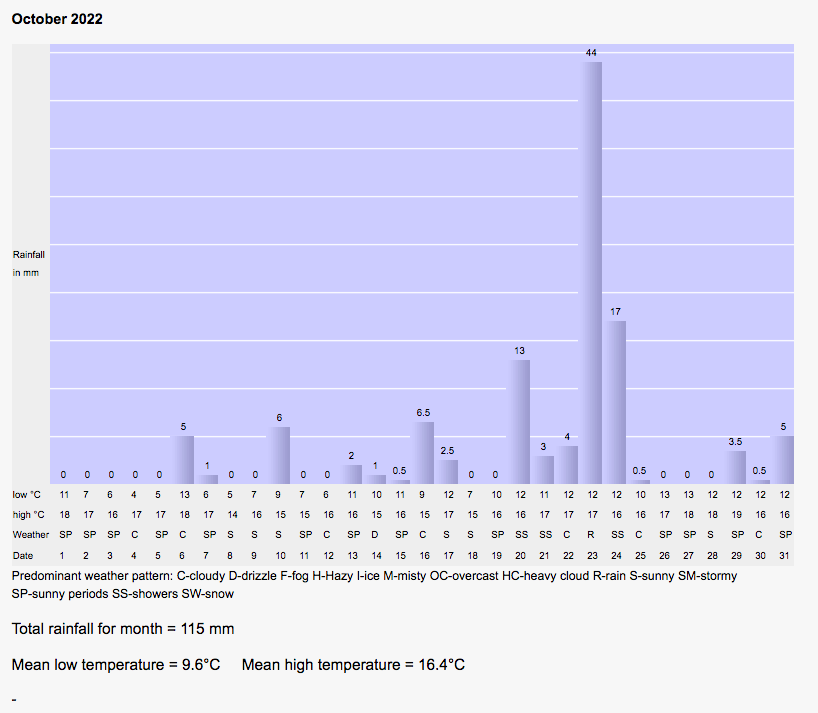
October – quite a fine start to the month, but after the 15th rain was more frequent, with a very heavy fall on the 23rd accompanied by thunder and lightning over a short period of time. Several properties experienced flooding.
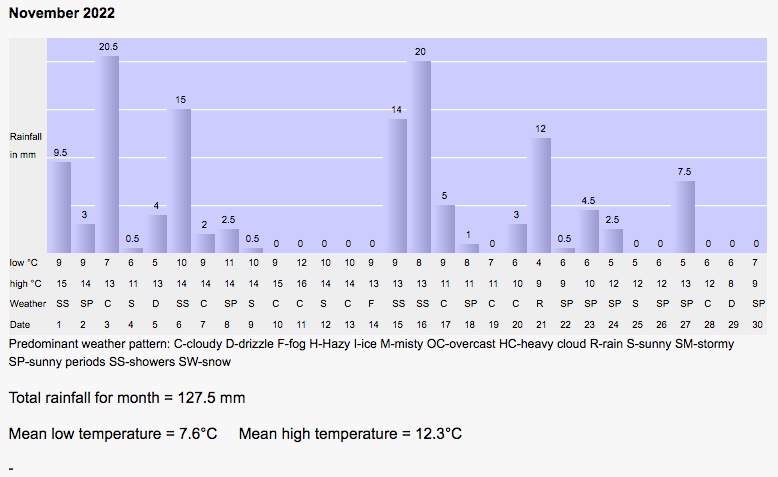
November – westerly winds brought, on average, the wettest November that we have measured with 127.5 mm of rain. Even so, the month was relatively mild with few previously higher temperature averages day and night. There were not many sunny days as might be expected for this month.
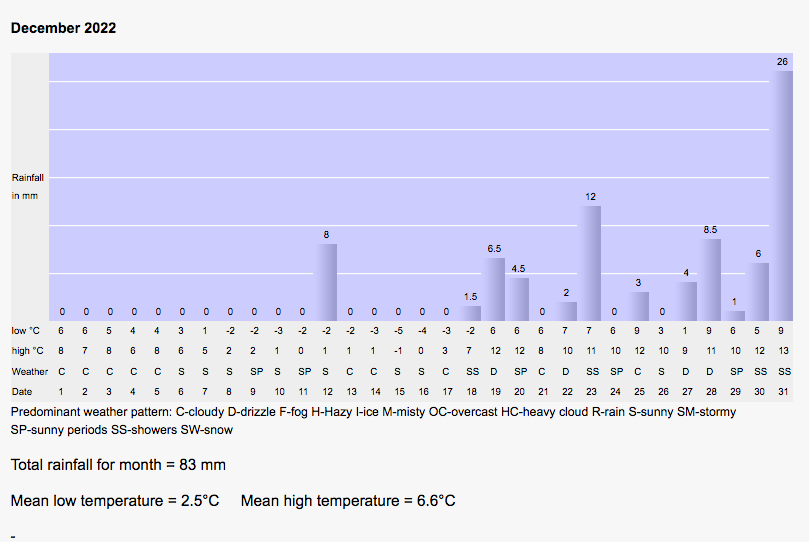
December – snow in this month is unusual, but an exceptionally cold period occured around the 8th of the month accompanied by 5cm of snow, melting to 8mm on the 12th. The month ended with quite wet and mild conditions.
For an account of UK weather changes see here.
